 Active Handling was introduced by GM in 1998 as an option. It became standard equipment on the 2001 and newer models. Like me, there may be a few of you who don’t realize what it does, how it does it, and the other options you have in changing the features. I’m not recommending you disengage it, but I thought you might like to know the options. Following is an abbreviated version of a GM Press Release from the fall of 1998. If you would like to read the full press release, this link will take you there: http://www.corvetteactioncenter.com/tech/c5/activehandling.htmltivehandling.html
Active Handling was introduced by GM in 1998 as an option. It became standard equipment on the 2001 and newer models. Like me, there may be a few of you who don’t realize what it does, how it does it, and the other options you have in changing the features. I’m not recommending you disengage it, but I thought you might like to know the options. Following is an abbreviated version of a GM Press Release from the fall of 1998. If you would like to read the full press release, this link will take you there: http://www.corvetteactioncenter.com/tech/c5/activehandling.htmltivehandling.htmlWhat Active Handling Does
The Active Handling system activates when there is a significant difference between how the driver intends for the car to corner and how the car is actually cornering. Working together with the ABS and traction control systems as needed, it automatically applies any of the four brakes to help correct the situation
Active Handling uses a simple yet sophisticated system of sensors to detect unwanted vehicle manuevers. These sensors include a steering angle sensor, yaw-rate sensor, lateral accelerometer and sensors in the vehicle's ABS brake and traction control systems. All of the data that these sensors provide is fed into the Corvette's onboard computer where specially-developed software "reads" all of the inputs and automatically activates the car's brakes selectively to help the driver bring the vehicle back under control.
Steering Angle Sensor: This digital sensor monitors the driver's steering inputs immediately and communicates the steering angle that the driver has selected back to the system. It is accurate to within one degree of steering angle change and is located in the car's steering column.
Yaw-Rate Sensor: This solid-state device utilizes a tiny pair of ceramic tuning forks to measure the actual rate that the car is turning or yawing from the centerline. This data is continuously fed into the Corvette's computer where the yaw rate is compared to the steering angle. Any variation beyond a pre-programmed set of values will result in activation of the Active Handling system's assist features. The yaw-rate sensor on the Corvette is located inside the center console.
Lateral Accelerometer: The lateral acceleration sensor measures the centrifugal force created in a turn. The data it provides is weighed against all of the other inputs and is used to calculate whether or not the car's limits are being exceeded for the speed and traction conditions that exist. This sensor is located beneath the passenger seat.
Unique Controller & Software: All of the information being provided by the sensors mentioned above is processed by the Corvette Active Handling system's computer through a very sophisticated and specialized software package. This computer is actively linked to the ABS brake system and the traction control system -- all these systems share information continuously. This multiple linkage is vital because the combined inputs from each system make the fully-integrated system better able to respond to a wider variety of inputs from the driver.
Competitive Driving Mode
The Corvette Active Handling system will be the first of its type to offer dual mode operation. In addition to a n "OFF" mode, in which Active Handling is disabled, the system also allows the driver to select a "COMPETITIVE DRIVING" mode for autocross or gymkhana competitions. In this mode, the Active Handling system remains fully-functional -- measuring steering, yaw rate and lateral acceleration inputs as well as applying individual wheel brakes as required -- but the traction control system is disabled, allowing for some wheelspin and oversteer that skilled drivers often find beneficial in competitive driving.
n "OFF" mode, in which Active Handling is disabled, the system also allows the driver to select a "COMPETITIVE DRIVING" mode for autocross or gymkhana competitions. In this mode, the Active Handling system remains fully-functional -- measuring steering, yaw rate and lateral acceleration inputs as well as applying individual wheel brakes as required -- but the traction control system is disabled, allowing for some wheelspin and oversteer that skilled drivers often find beneficial in competitive driving.
 n "OFF" mode, in which Active Handling is disabled, the system also allows the driver to select a "COMPETITIVE DRIVING" mode for autocross or gymkhana competitions. In this mode, the Active Handling system remains fully-functional -- measuring steering, yaw rate and lateral acceleration inputs as well as applying individual wheel brakes as required -- but the traction control system is disabled, allowing for some wheelspin and oversteer that skilled drivers often find beneficial in competitive driving.
n "OFF" mode, in which Active Handling is disabled, the system also allows the driver to select a "COMPETITIVE DRIVING" mode for autocross or gymkhana competitions. In this mode, the Active Handling system remains fully-functional -- measuring steering, yaw rate and lateral acceleration inputs as well as applying individual wheel brakes as required -- but the traction control system is disabled, allowing for some wheelspin and oversteer that skilled drivers often find beneficial in competitive driving.Summary of Active Handling System Modes
ON - Active Handling is automatically enabled when the car is started. This is also true of the ABS brake and traction control systems.
OFF - Like traction control, the Active Handling system may be manually turned off if the driver so desires. This is not true of the ABS brake system which is always enabled.
COMPETITIVE DRIVING - In this mode, Active Handling and ABS are both enabled, but traction control is shut off.
The "OFF" and "COMPETITIVE DRIVING" modes are important features on a high-performance sports car like the Corvette. As mentioned earlier, skilled drivers may find that some wheelspin and oversteer can be beneficial to their lap times in competitive events, and the Corvette system allows them to operate the car in this fashion when appropriate. Chevrolet recommends against selecting these modes for street use.
Limitations
The overall effectiveness of the Corvette Active Handling system, or any similar system, is directly related to available tire traction and the aggressiveness of a given maneuver. Active Handling is designed to work to use existing traction to assist the driver -- but it cannot overcome the laws of physics. The Active Handling system reacts only in extreme situations, and special care should be taken when the system does activate because it's a clear signal that vehicle or tire limits are being exceeded.
This information wasn't placed on this site to encourge anyone to drive without the Active Handling system turned on. The Corvette is a powerful car, and a system of this type can be beneficial in preventing out-of-control situations from remaining that way.















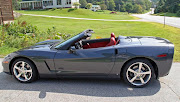





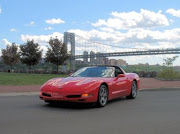
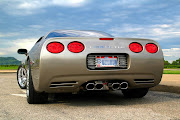




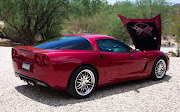
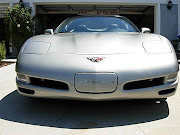


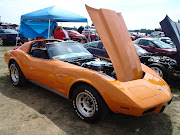


No comments:
Post a Comment